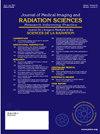The connectomics revolution: Utilizing Resting State fMRI and DTI to personalize the treatment of neurological and psychocognitive disorders
IF 1.3
Q3 RADIOLOGY, NUCLEAR MEDICINE & MEDICAL IMAGING
Journal of Medical Imaging and Radiation Sciences
Pub Date : 2024-10-01
DOI:10.1016/j.jmir.2024.101467
引用次数: 0
Abstract
Background
Connectomics has been instrumental in advancing our understanding of the intricate neural networks that underpin neurological and psychiatric conditions. Resting state functional magnetic resonance imaging (rs-fMRI) and diffusion tensor imaging (DTI) are critical imaging modalities that provide insights into the brain's functional and structural connectivity without the need for active patient participation.
Purpose
This presentation is designed to showcase the pivotal role of rs-fMRI and DTI in the burgeoning field of personalized functional imaging. It will highlight how these techniques can redefine the practice of radiological technologists by integrating connectomic insights into personalized patient care.
Methods
The presentation will discuss the protocols for employing rs-fMRI and DTI in a clinical environment, including data collection, analysis, and interpretation strategies. It will illustrate the connectome's relevance in various neurological conditions and the ways in which these imaging techniques can contribute to the development of individualized treatment plans.
Results
Employing rs-fMRI and DTI for connectomic analysis has yielded promising results in pinpointing neurological disease biomarkers, deciphering psychiatric disorder pathways, and crafting tailored therapeutic interventions. These imaging modalities offer a refined perspective on brain disorders, shifting the diagnostic paradigm from a general to a more patient-centered approach.
Conclusion
The integration of connectomics with personalized functional imaging marks a significant advancement in the field of medical imaging. Rs-fMRI and DTI not only enhance our visualization of brain networks but also support a transition toward treatments aimed at the underlying mechanisms of disease. Embracing these techniques is crucial for the progression of personalized medicine and the enhancement of patient care outcomes.
Implications
The keynote will delve into the implications of these technologies for radiological technologists, stressing the necessity for a transition to a connectome-based imaging model. Additionally, it will touch upon the educational and skill development needed for practitioners to adeptly adopt and apply these sophisticated imaging techniques in a personalized healthcare setting.
连接组学革命:利用静息状态 fMRI 和 DTI 对神经和心理认知障碍进行个性化治疗
背景连接组学有助于加深我们对支撑神经和精神疾病的错综复杂的神经网络的理解。静息状态功能磁共振成像(rs-fMRI)和弥散张量成像(DTI)是关键的成像模式,无需患者主动参与即可深入了解大脑的功能和结构连通性。演讲将讨论在临床环境中使用 rs-fMRI 和 DTI 的规程,包括数据收集、分析和解释策略。结果应用 rs-fMRI 和 DTI 进行连接组分析在精确定位神经疾病生物标记物、破译精神障碍通路和制定量身定制的治疗干预措施方面取得了可喜的成果。这些成像模式为脑部疾病提供了一个精细的视角,将诊断范式从一般的方法转变为更加以患者为中心的方法。Rs-fMRI和DTI不仅增强了我们对大脑网络的可视化,还支持向针对疾病潜在机制的治疗过渡。该主题演讲将深入探讨这些技术对放射技术人员的影响,强调向基于连接体的成像模式过渡的必要性。此外,它还将涉及从业人员在个性化医疗环境中熟练采用和应用这些先进成像技术所需的教育和技能发展。
本文章由计算机程序翻译,如有差异,请以英文原文为准。
求助全文
约1分钟内获得全文
求助全文
来源期刊

Journal of Medical Imaging and Radiation Sciences
RADIOLOGY, NUCLEAR MEDICINE & MEDICAL IMAGING-
CiteScore
2.30
自引率
11.10%
发文量
231
审稿时长
53 days
期刊介绍:
Journal of Medical Imaging and Radiation Sciences is the official peer-reviewed journal of the Canadian Association of Medical Radiation Technologists. This journal is published four times a year and is circulated to approximately 11,000 medical radiation technologists, libraries and radiology departments throughout Canada, the United States and overseas. The Journal publishes articles on recent research, new technology and techniques, professional practices, technologists viewpoints as well as relevant book reviews.
 求助内容:
求助内容: 应助结果提醒方式:
应助结果提醒方式:


